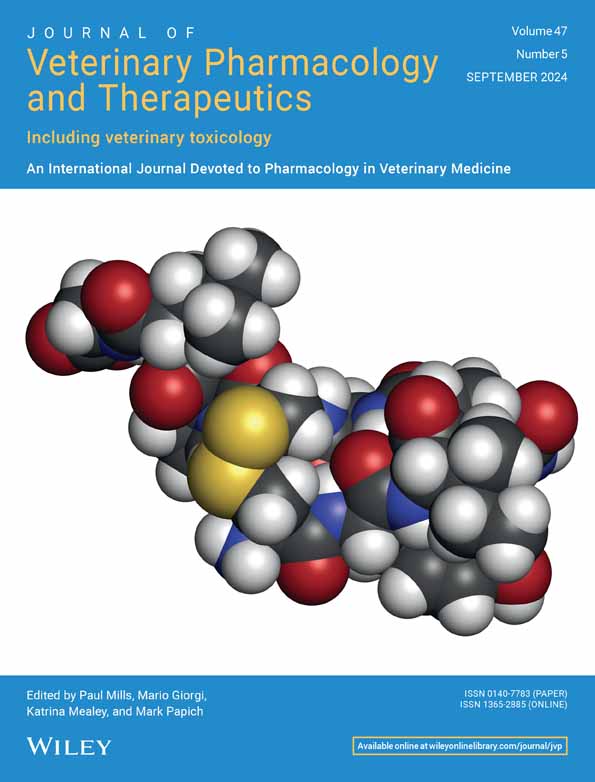Comparative disposition kinetics of oral deracoxib in sheep and goats
Abstract
This study investigates the pharmacokinetics (PK) of deracoxib (DX), a selective COX-2 inhibitor, in sheep and goats following a single oral dose. DX, approved for dogs, holds potential as an alternative NSAID in small ruminants, particularly in light of heightened concern regarding abomasal ulceration. The study employed an oral administration of DX at a dose of 150 mg/head (sheep and goats), and plasma concentrations were determined after validating a high-performance liquid chromatography method, coupled to a UV detector. The PK parameters, including maximum plasma concentration (C max), time to reach C max (T max), elimination half-life (t 1/2), and area under the curve (AUC), were evaluated through non-compartmental analysis. Results showed detectable DX in plasma up to 48 h, with no observed adverse effects. No significant differences in any PK parameters were noted between sheep and goats. Notably, t 1/2 values were relatively long, at 16.66 h for sheep and 22.86 h for goats. Despite the fact that both species exhibited comparable drug exposure, high individual variability was noted within each species, suggesting to take into account individual variations in response to DX treatment, rather than species-specific considerations. Additional research involving pharmacodynamics and multiple-dose studies is warranted to comprehensively assess the profile of DX in these species.
CONFLICT OF INTEREST STATEMENT
The authors declare that there are no conflicts of interest in publishing this work.
Open Research
DATA AVAILABILITY STATEMENT
The datasets used and/or analyzed during the current study are available from the corresponding author, upon reasonable request.




